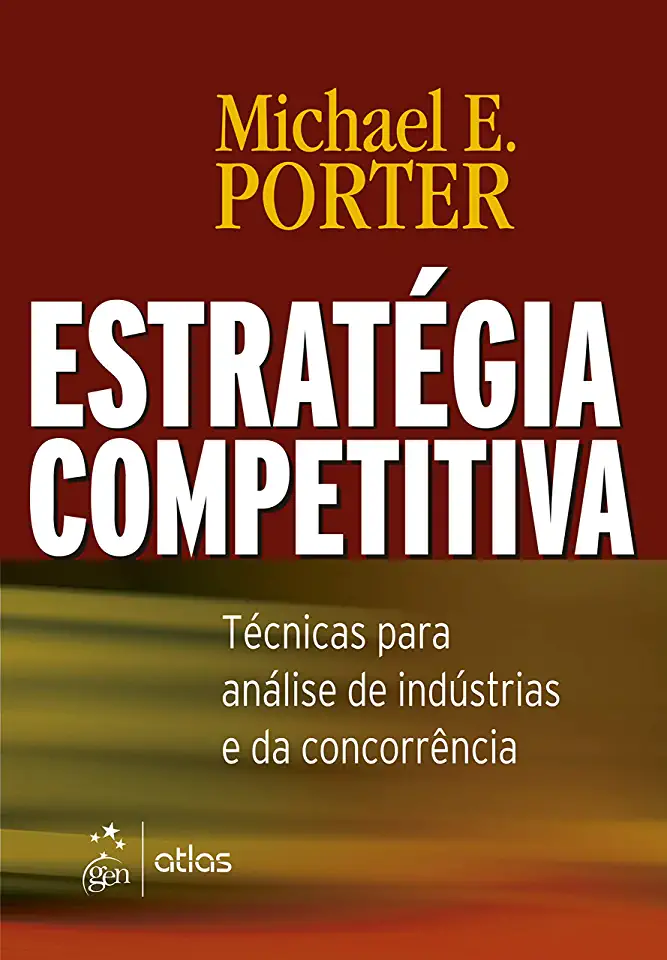
Competitive Strategy - Michael E. Porter
Competitive Strategy: Techniques for Analyzing Industries and Competitors
In today's fast-paced business environment, companies face intense competition from both domestic and international rivals. To succeed in this challenging landscape, businesses need a well-defined competitive strategy that outlines how they will gain and sustain a competitive advantage over their competitors. Michael E. Porter's seminal work, "Competitive Strategy," provides a comprehensive framework for analyzing industries and competitors, and developing strategies that lead to long-term success.
Understanding the Competitive Environment
Porter begins by emphasizing the importance of understanding the competitive environment in which a company operates. He introduces the concept of industry structure, which refers to the underlying economic and technical characteristics that shape competition within an industry. Porter argues that industry structure is a key determinant of a company's profitability and long-term success.
The Five Forces Model
At the heart of Porter's competitive strategy framework is the Five Forces Model, a powerful tool for analyzing industry structure and competitive dynamics. The Five Forces Model identifies five key forces that shape competition within an industry:
Threat of New Entrants: This force assesses the ease with which new companies can enter an industry. The higher the barriers to entry, the less likely it is that new competitors will emerge and challenge existing players.
Bargaining Power of Suppliers: This force evaluates the power that suppliers have in influencing the prices, quality, and availability of inputs. The stronger the bargaining power of suppliers, the more they can extract concessions from companies in the industry.
Bargaining Power of Buyers: This force assesses the power that buyers have in influencing the prices, quality, and availability of products or services. The stronger the bargaining power of buyers, the more they can dictate terms to companies in the industry.
Threat of Substitute Products or Services: This force examines the potential for alternative products or services to replace those offered by companies in the industry. The higher the threat of substitutes, the more vulnerable companies are to losing market share.
Rivalry Among Existing Competitors: This force assesses the intensity of competition among existing players in the industry. The more intense the rivalry, the more difficult it is for companies to gain and sustain a competitive advantage.
Developing a Competitive Strategy
Based on the analysis of industry structure and competitive forces, Porter provides a framework for developing a competitive strategy. He argues that companies need to focus on two key elements:
Strategic Positioning: This involves choosing a unique position in the industry that allows a company to differentiate itself from competitors and capture a sustainable competitive advantage.
Operational Effectiveness: This involves optimizing the company's operations to achieve superior efficiency, quality, and customer responsiveness.
Porter emphasizes the importance of aligning strategic positioning and operational effectiveness to create a cohesive and effective competitive strategy.
Case Studies and Real-World Examples
Throughout the book, Porter illustrates his concepts and frameworks with numerous case studies and real-world examples from a wide range of industries. These examples bring the theory to life and help readers understand how to apply Porter's ideas in practice.
Conclusion
"Competitive Strategy" is a must-read for business leaders, managers, and entrepreneurs who want to develop and implement effective strategies for gaining and sustaining a competitive advantage. Porter's insights into industry structure, competitive forces, and strategic positioning provide a powerful framework for understanding the competitive landscape and making informed decisions that lead to long-term success.
Enjoyed the summary? Discover all the details and take your reading to the next level — [click here to view the book on Amazon!]